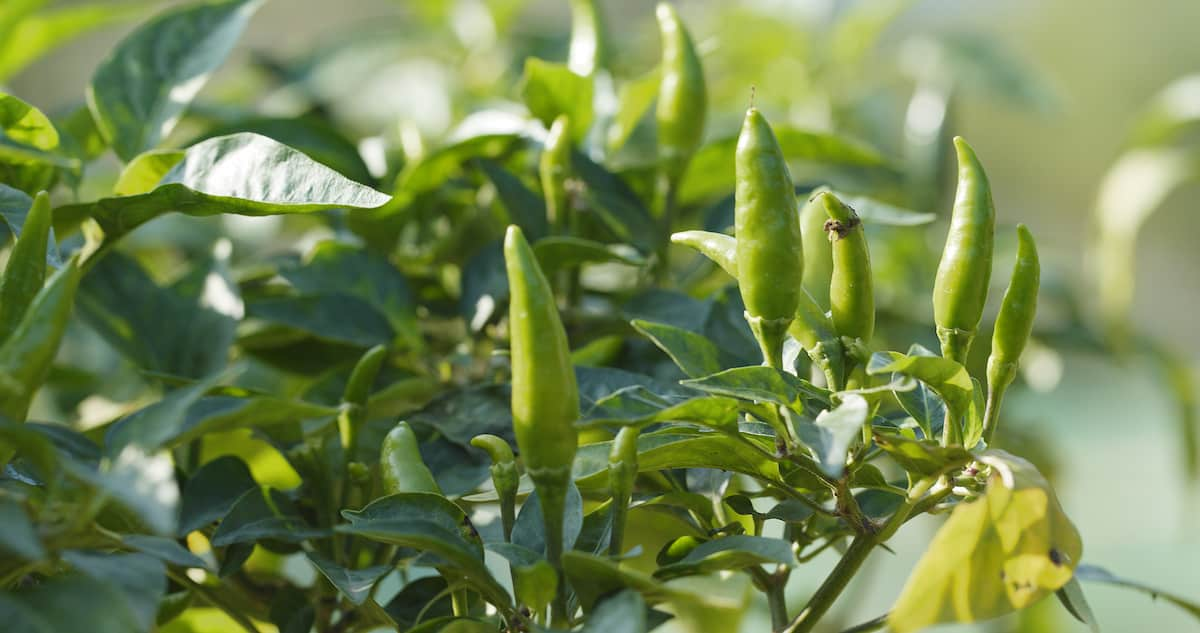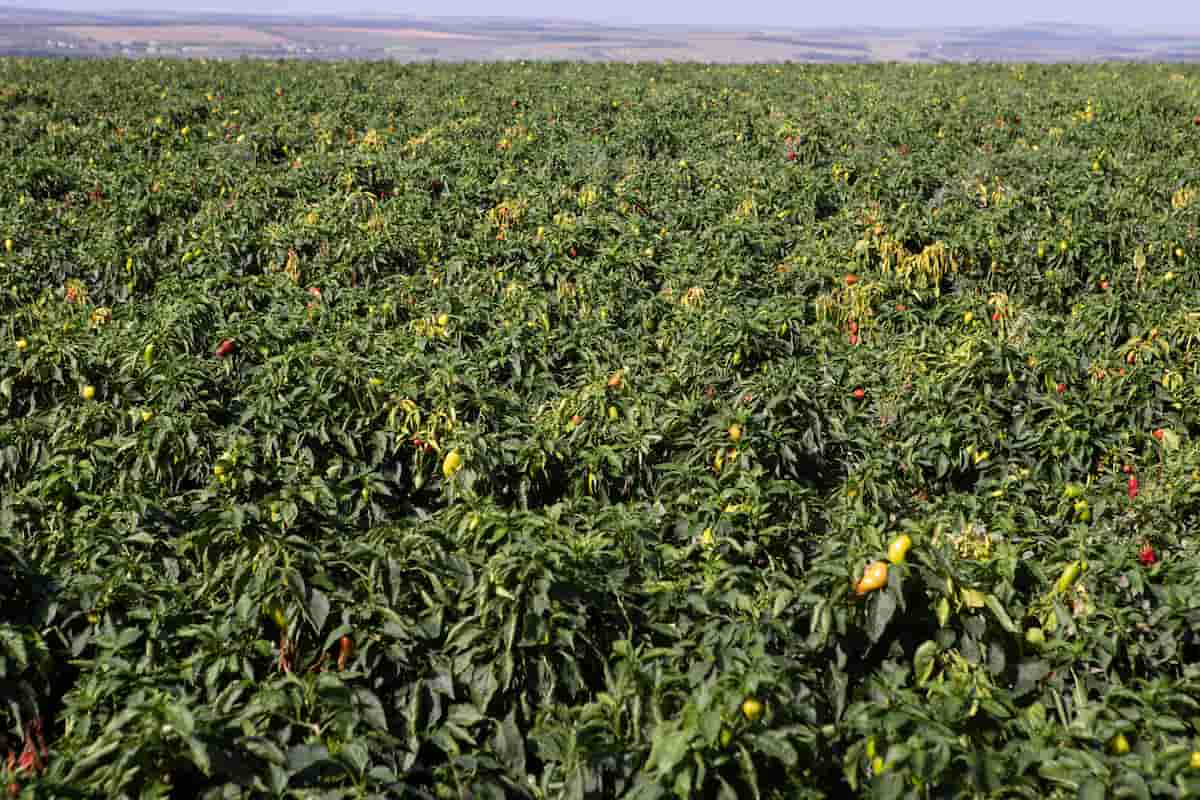The Chilli Root-knot Nematode, Meloidogyne incognita, belonging to the Family Heteroderidae of the Order Tylenchida, is a serious pest that causes significant yield losses and reduces the quality of crops worldwide. It is a microscopic, worm-like organism classified as a plant-parasitic nematode. The nematode damages chilli plants by invading the roots and forming galls or knots. In addition to causing direct damage to chilli plants, they can also facilitate the entry of secondary pathogens, leading to further damage and yield loss.

Control strategies include crop rotation, use of resistant varieties, soil solarization, and application of nematicides. To effectively manage this pest, it is important to understand its life cycle, its preferred habitats, and the best methods for controlling it. This article will provide an overview and discussion of the Chilli Root-knot Nematode Pest in Chilli crops, including its symptoms, identification techniques, and control.
Chilli Root-knot Nematode Pest Management
Life Cycle of Chilli Root-knot Nematode Pest in Chilli Crop
The life cycle of the Chilli Root-knot Nematode pest has four stages. They are egg, nymph, pupa, and adult. The life cycle of the Chilli Root-knot Nematode begins with the egg stage. The female nematode lays eggs in a gelatinous mass, often visible as small white balls on the surface of infected roots. Depending on environmental conditions, the eggs are deposited in the soil and hatch into second-stage juveniles (J2) after 10 to 14 days. The J2 is the infective stage of the chilli root-knot nematode.
The J2 is attracted to plant roots by chemical signals and actively seeks out suitable hosts. Once they locate a host, they penetrate the root tissues and migrate toward the vascular system. Once inside the root, the J2 undergoes several developmental stages, feeding on plant tissue and growing. They induce the formation of specialized feeding structures called giant cells, which provide them with a source of nutrients.
As the J2 feed and grow, they cause the formation of galls or knots on the roots, which interfere with the plant’s ability to take up nutrients and water. After approximately 2 to 3 weeks, the J2 molt into fourth-stage juveniles (J4), which continue to feed and develop within the root tissues. The J4 are stationary and do not move through the soil like the J2. They remain inside the roots until they reach maturity and are ready to reproduce.
After several weeks of development, the J4 molt into adult males or females. They continue to feed on plant tissue, produce eggs within their bodies, and start the lifecycle again. The entire lifecycle of the chilli root-knot nematode can be completed in as little as 20 days under optimal conditions, allowing for multiple generations to develop within a single growing season.
Occurrence of Chilli Root-knot Nematode Pest in Chilli Crop
- Location of Chilli Root-knot Nematode Pest: This pest infests Chilli crops in India, Bangladesh, Nepal, Africa, Sri Lanka, China, Thailand, Malaysia, Vietnam, Indonesia, the United States, Mexico, Brazil, Colombia, Ecuador, the Philippines, New Zealand, and Australia.
- Host Range: The Chilli Root-knot Nematode pest infects crops like Chilli, Tomato, Brinjal, Okra, Cotton, Soybean, Peanut, Banana, Citrus, and Snake gourd.
Factors Favoring the Population Increase of Chilli Root-knot Nematode Pest in Chilli Crop
- Temperature – The pest prefers warm temperatures between 20°C to 30°C. The nematodes become inactive or die below 14°C or above 35°C.
- High Soil Moisture – The pest requires high soil moisture for its survival and growth. The nematodes can move freely in moist soil and penetrate the roots of the chilli plants.
- Sandy or Sandy-loam soil – The pest prefers sandy or sandy-loam and light soils, which favor their movement and penetration of plant roots. These soils also have a low water-holding capacity, leading to high soil moisture, which is also favorable.
- Soil pH – The pest thrives in soil pH between 5.5 and 7.5. Alkaline soils with a pH above 8.5 are not favorable for the nematodes.
- High Plant Density – High plant density favors development and spread. The nematodes move more easily from plant to plant in densely planted crops.
- Lack of Crop Rotation – Failure to rotate chilli crops with non-host crops can build up the soil’s nematode population.
In case you missed it: Whitefly Pest Management in Chilli: Symptoms, Treatment, Chemical, Biological, and Organic Control

Identification of Chilli Root-knot Nematode Pest in Chilli Crop
- Egg: The eggs are small, white, and round.
- Juvenile: They are small, worm-like organisms approximately 0.5 mm long and can move freely through the soil.
- Adult: The male is a small, worm-like organism that does not feed and has a short lifespan. The females are larger and more complex, with cylindrical bodies and round heads.
Damage Symptoms of Chilli Root-knot Nematode Pest in Chilli Crop
- The characteristic symptom is the formation of galls or knots, which interfere with the root’s ability to take up nutrients and water.
- This can result in stunted growth, reduced flowering and yield, and even plant death.
- Empty patches can be seen in the field due to random plant deaths.
- The infested roots undergo profuse branching causing a ‘beard root’ symptom.
- The leaves turn yellow and wilt rapidly from affected plants in dry areas.
- The affected seedlings die quickly in the seed bed and cannot tolerate the transplanting process.
Percentage of Yield Loss in Chillis Due to Chilli Root-knot Nematode Pest
- In India, the yield losses due to Chilli Root-knot Nematode pests are 15-50%. In Bangladesh, the losses are 70%. In Nepal, the losses are 45%. In Thailand, the yield loss is 60%. In Malaysia, it is 20-50%. In Vietnam, the losses are 50%. In Sri Lanka, the losses are 60%. In Indonesia, the losses are 20-60%. In Africa, it is 60%. In the United States, it is 10-80%. In Mexico, it is 10-70%. In Brazil, it is 10-70%. In China, it is 10-70%.
- In Colombia, the losses are 20-80%. In Ecuador, it is 40%. In New Zealand, it is 30%. In Australia, it is 10-60%. In the Philippines, the yield losses are 10-70%. The Economic Threshold Level (ETL) for the Chilli Root-knot Nematode pest is set at 1-2 nematodes per gram of root.
Cultural Control of Chilli Root-knot Nematode Pest in Chilli Crop
- Crop Rotation – Rotate the chilli crops with non-host plants such as legumes, cereals, or grasses to break the pest’s lifecycle and reduce its population.
- Organic Matter – Incorporating organic matter, such as green manure and compost, in the soil suppresses nematode populations.
- Sanitation – Remove and destroy infected plants to reduce the nematode population in the field. Infected plants should be uprooted and destroyed, and equipment that comes in contact with the infected plants should be disinfected.
- Mulching – The mulching technique involves the application of organic material, such as straw or leaves, as a physical barrier on the soil surface around the chilli plants.
Biological Control of Chilli Root-knot Nematode Pest in Chilli Crop
- Microbial Biocontrol Agents – Bacillus, Pseudomonas, and Trichoderma produce enzymes and compounds that suppress nematodes and can reduce their population density.
- Nematophagous Fungi – Fungi such as Arthrobotrys and Paecilomyces can infect and kill nematodes, reducing their population density.
- Parasitoid Nematodes – Some nematodes, such as Heterorhabditis and Steinernema, penetrate the chilli root-knot nematode, releasing bacteria that kill the nematode.
- Predatory Mites – Some mite species, such as the Stratiolaelaps scimitus, feed on the nematode eggs, reducing their population density.
Chemical Control of Chilli Root-knot Nematode Pest in Chilli Crop
- Spray insecticides like Carbofuran, Aldicarb, and Ethoprophos on the foliage to control the pest.
- Soil Fumigants – Treat the soil with fumigants such as methyl bromide before planting the chilli crops.
- Seed Treatment – To prevent infestation, treat the seeds with Imidacloprid before sowing.
Organic Control of Chilli Root-knot Nematode Pest in Chilli Crop
- Biological nematicides, such as Paecilomyces lilacinus, contain fungus spores that infect and kill the nematodes.
- Spray Thiophenes and Terpenes obtained from Marigold species on the plants to control the pest.
- Spray Chitinase obtained from Poultry manure on the plants to control the pest.
- Apply Vermicompost obtained by composting organic waste by earthworms to control the pest.
- Plant Mustards as a cover crop, which produces Glucosinolates to control the pest population.
- Plant extracts from neem, garlic, tobacco, cinnamon, ginger, turmeric, hot pepper, and Chilli can be applied to manage the infestation.
Preventive Measures for Control of Chilli Root-knot Nematode Pest in Chilli Crop
- Soil amendments – Soil amendments, such as organic matter, lime, and gypsum, can help improve soil structure and reduce nematode populations by increasing soil pH and fertility.
- Soil Solarization – Soil solarization is a technique used to control soil-borne pests with a clear plastic sheet during the summer, which raises the soil temperature and kills the nematodes.
- Nematode-free seedlings – Using nematode-free seedlings is an effective method of preventing nematode infestations in chilli crops.
- Monitoring – Monitor the crops regularly to identify pest infestation in the early stages to keep it under control.
In case you missed it: Mealybug Pest Management in Chilli: Symptoms, Treatment, Chemical, Biological, and Organic Control

Conclusion
The Chilli Root-knot Nematode Pest, Meloidogyne incognita, is a major pest that affects Chilli production worldwide, causing significant yield losses and economic damage. By adopting a combination of natural nematicides, and cultural, preventive, and biological control measures, producers can effectively manage nematode populations in chilli crops while minimizing the impact on the surrounding environment and human health.
- Beneficial Insects in Pest Management
- Natural Solutions for Pest Control in Flower Gardens
- Types of Fungicides Used in Agriculture
- Common Issues in the Fruit Development Stage of Pomegranate Farming
- Fruit Development Issues in Papaya: Easy Solutions and Treatment
- Soil-Borne Diseases and How to Protect Your Plants
- Practices to Prevent Disease Spread in the Garden
- From Wilted to Thriving: How to Treat Root Rot Naturally in Houseplants
- Natural Remedies to Cure Brown Spots on Fig Tree Leaves